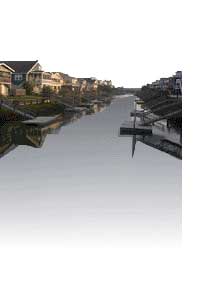NEWS FROM THE UNDERSTOREY
The Understorey Network promotes the protection of
existing native vegetation and the use of local native
understorey in
vegetation,through field days and workshops,growing of
plants from seed and the maintenance of a plants
database.
Groups and individuals are assisted with expertise sharing
through a support network.
What you can do to support the network is to fence or
plant understorey on your land,grow plants for yourself or
others,or collect
seed etc.
.
The understorey is likely to be made up of shrubs,tree
seedlings,low trees,grasses,other herbs,vines,ferns and
mosses.
a hectare of natural woodland may contain 3-4 species of
tree but perhaps in excess of 30 understorey species.
serious tree decline is widely publicised,while understorey
species are disappearing at an even faster rate yet is
often overlooked.
Understorey provides shelter for young livestock,is vital to
beekeepers,improves soil fertility,makes a more pleasant
environment,attracts small song birds,assists natural pest
control,providesemergency feed for stock,stabilises
soil,provides a fuel
source.
Important as the understorey is,if improperly managed it
can be a nuisance and reduce rural incomes.
WHAT YOU CAN DO:
Determine conservation values BEFORE any land clearing or
construction commences on your property.
Control weeds,rabbits & other vermin.
Protect Bushland for future generations by writing a:
CONSERVATION COVENANT on the land's title.
Encourage natural regeneration.
Remove weeds manually,reduce the use of herbicides.
Fence off areas.
Plant LOCAL understorey.
Sow seeds into prepared ground on site.
Do not overburn.
Reduce winds.
Join
Tasmanian Understorey Network, or ...GREENING
AUSTRALIA
Animals of the Soil & Litter Layer
Immediately above the topsoil is a layer of organic debris
from plants & animals known as liitter.
This layer is important to soil formation,and contains great
numbers of tiny animals.These animals over centuries
together with
dead plants have broken down and created
byproducts,which in turn have created a rich humus.If soil
organisms,plants and litter
are removed,nutrient recycling is interrupted,the soil
structure is damaged and long term fertility is reduced.
At least 1/5rd of Australia's Native mammal species depend
directly upon this layer for food and shelter.
The moist litter also provides a home and feeding space for
several frog species.
Ants & Other Species
There are at least 110,000 species of native australian
insects.
Many of these need native vegetation as part of their
lifecycle.Any changes to native vegetation will affect the
insects.Careful
choices of native plants can improve habitat for native
insect species which in turn will improve the number of
insect eating birds
and other animals.
Ants are important pest controllers for trees.
Some ants live entirely in the ground layer,their role is to
decompose organic matter.
BUTTERFLYS & THEIR VALUABLE ROLE IN THE ECOSYSTEM
The Tasmanian Hairstreak Butterfly is most colourful,being
black and bright orange.Note the butterfly illustrated on
this page is
actually the Monarch.If anyone has an image of the
Hairstreak I would like to display it here.
The Hairstreak has been considered rare and endangered
but not officially classified as such,sightings have
increased recently, but
still considered vulnerable due to loss of habitat from
uncontrolled clearing of trees and the understorey.
In 1984 the last known habitat was a small pocket of
remnant vegetation at Port Sorell,now subdivided.
The growth of rural subdivisions is the main reason for the
species decline.
LANDCARE - A GRASSROOTS MOVEMENT
Over the past decade - the "Decade of Landcare", we
have learnt a lot and achieved much,but still problems,such
as
SALINITY,ACID SOILS & WEEDS affect large areas of
Australia.
Our Native Plants & Animals are under constant threat.
Water Quality is a major concern.
Waste Management & Recycling has no uniformity in it's
approach, with some regions ,especially
Launceston,Tasmania well
behind others.
We must continue our efforts towards healthy ecosystems
by building on the successes of Landcare.
A discussion paper published December 1999 with the aim
of developing a national policy framework for managing
natural
resources in the next 10 - 15 years A Sustainable Future
For Rural Australia
FROG WATCH
Children are fascinated by frogs and these creatures are
an excellent means of teaching children about the fragile
nature of the
ecosystem . Many schools around the state take their
classes on field trips to observe frogs in their natural
habitat,and then go
back to the classroom and produce web pages such as
MEANDER PRIMARY
Australia has at least 180 species of native frogs - more
are still being found.
Many native frog species need trees as an important part
of their habitat.
Frogs in wetlands are an important food source for
waterbirds,snakes,fishes and other animals.
About 50 species are known as treefrogs.
Tadpoles are herbivores,they graze on algae while adult
frogs feed mainly on insects,insect larvae & other small
animals.
Frogs can be economically useful in helping to control pest
insects.
REPTILES
Australia has over 650 native reptile speces,more than
most other continents,they include goannas,skinks,dragon
lizards,geckos &
snakes.
CHECK OUT THE LINKS THAT RELATE TO THIS TOPIC ON
MY elaunceston site
http://www.elaunceston.com/people/cleanup2000/APO3AAbout.htm
MORE NEWS LATER
WATER 
|
